Hi I am designing a class D amplifier PCB using the TPA3122D2 amplifier chip. I am planning to base my circuit on the schematic from the evaluation board:
I bought components of the same values given in the schematic and tried building out the circuit on a breadboard. However I have run into a problem which I have isolated to the output filter circuit, shown here:
Before connecting the LOUT output pin the output filter I checked the LOUT pin with a scope and saw the high frequency modulated audio signal I would expect at a class D output. At this point the output circuit looked like this:
I then tried connecting the output to the output filter with no speaker attached, at which point the chip began overheating and the signal at the LOUT pin disappeared. After this the chip is fried, and overheats whenever it is given power. I was able to repeat this several times. At the point where the chip breaks the output circuit looks like this:
I also tried connecting the output filter to a fresh chip without the capacitor to ground, at which point the chip does not break:
At this point I am fairly certain the problem in my selection of either the L_FILTER or C_FILTER component, highlighted below:
The EVM board uses the following components:
Inductor: A7503AY-220M Datasheet (Not Commercially Available)
Capacitor: Capacitor, metal poly, 0.68µF, 63V, B32529C684J
When building out the circuit I used:
Inductor: DR0608-223L
I chose this inductor because it had the same DC current rating, and nearly the same maximum DC resistance (78mOhms vs 97mOhms).
Capacitor: 50V 0.68uf Ceramic
I used this capacitor because I had it on hand and was hoping to use SMT ceramic caps where possible for simplicity of fabrication.
In Conclusion:
Is there a necessary rating I am missing in one of these two components that is causing the amplifier chip to break in this way? What rating should I be looking at? How can I ensure I am selecting the proper components to make the circuit work?
I would like to understand this, because I don't want to use the components from the EVM. The inductor is not available on Mouser or DigiKey, and I would like to find a capacitor with a smaller footprint for my eventual PCB.
Couple Disclaimers:
I rechecked the circuit several times and am certain is built correctly on the breadboard. I am also aware that breadboards are non ideal for high frequency circuits, but I am only looking for proof of concept, not audiophile quality.
I have also acquired the EVM for this component and tested that the component works when given the proper circuitry.
I used a line level sine wave for testing the audio input. This problem occurs whether or not I give the amplifier any input.
Thanks!
